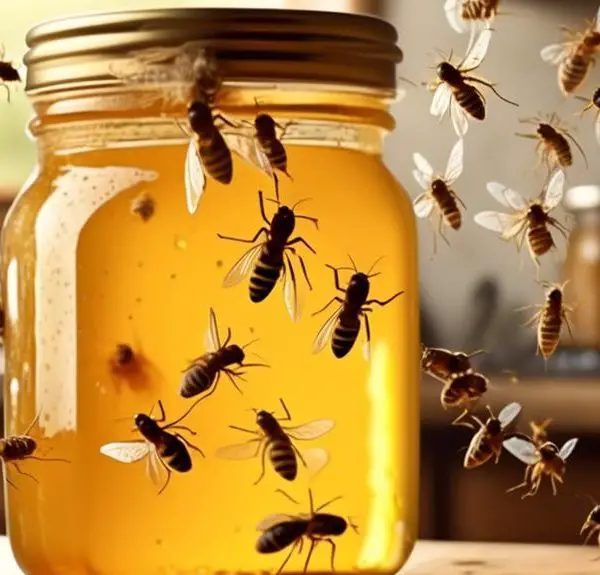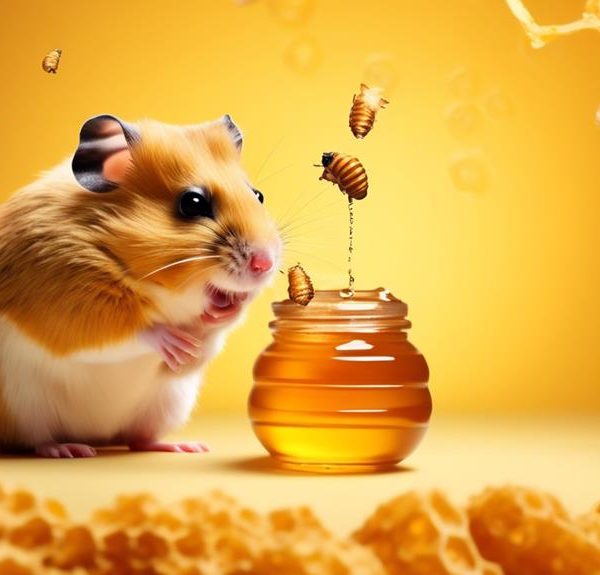Hone in on the intriguing differences between ground bees and honey bees, unraveling their unique characteristics and crucial roles in our ecosystem.
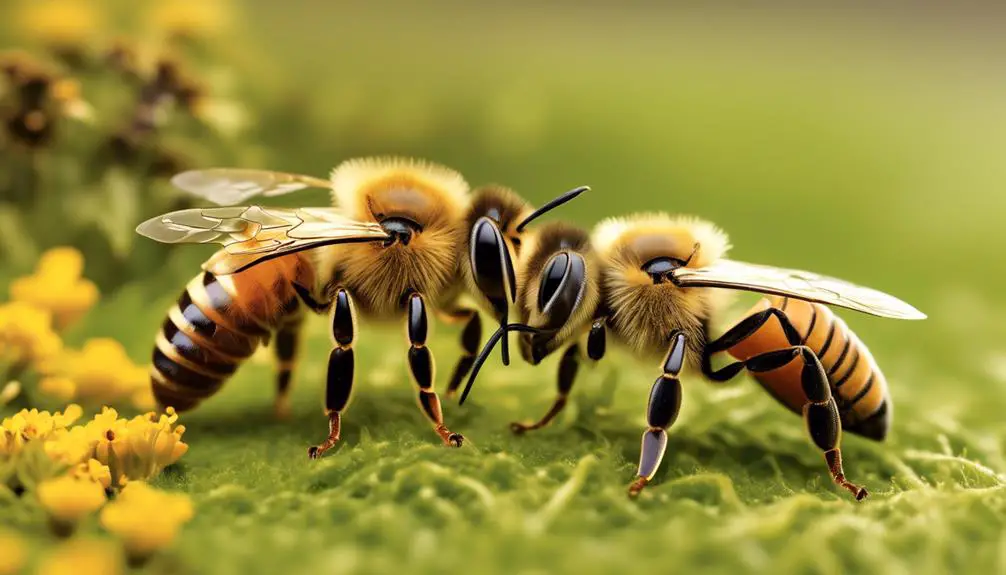
Are Ground Bees Honey Bees?
Just as a rose by any other name would still smell as sweet, the distinction between ground bees and honey bees isn't merely in their names. You've likely seen both buzzing around your garden, but can you tell them apart?
Their behaviors, habitats, and contributions to the ecosystem are different, but they're often mistaken for one another. Let's pull back the curtain on these fascinating creatures and explore their unique characteristics.
Will you uncover the truth behind their identities?
Key Takeaways
- Ground bees are solitary insects that dig underground nests, while honey bees live in large colonies with a queen, drones, and worker bees.
- Ground bees nest in dry, sandy soil in sunny areas, while honey bees build complex hives in tree cavities or sheltered spots.
- Queen honey bees lay all eggs in the hive, while ground bees lay eggs in their underground nests for reproduction.
- Honey bees produce honey through a process of collecting nectar, while ground bees do not produce honey.
Understanding Ground Bees

To fully understand ground bees, you'll need to delve into their unique characteristics, behavior, and habitat, all of which starkly contrast with those of their more well-known counterparts, the honey bees. Ground bees, scientifically known as Andrenidae, are solitary insects, meaning they don't live in colonies like honey bees do. Instead, each female digs her own underground nest where she lays her eggs.
You'll find these buzzing creatures in a variety of environments, from forests to deserts, but they're particularly fond of sandy soil. Unlike honey bees, they're not particularly aggressive. Unless provoked, they'll keep to themselves, busy with their digging.
Their size varies, with some species no larger than a grain of rice, while others can reach up to half an inch. They're often mistaken for wasps due to their slender bodies and less hairy appearance. Moreover, unlike honey bees, they don't produce honey or beeswax, but rather play a crucial role in pollination. So, when you see small mounds of soil with a hole in the center in your garden, don't be alarmed. You've got ground bees, the solitary, non-aggressive, and vital pollinators.
The Life of Honey Bees
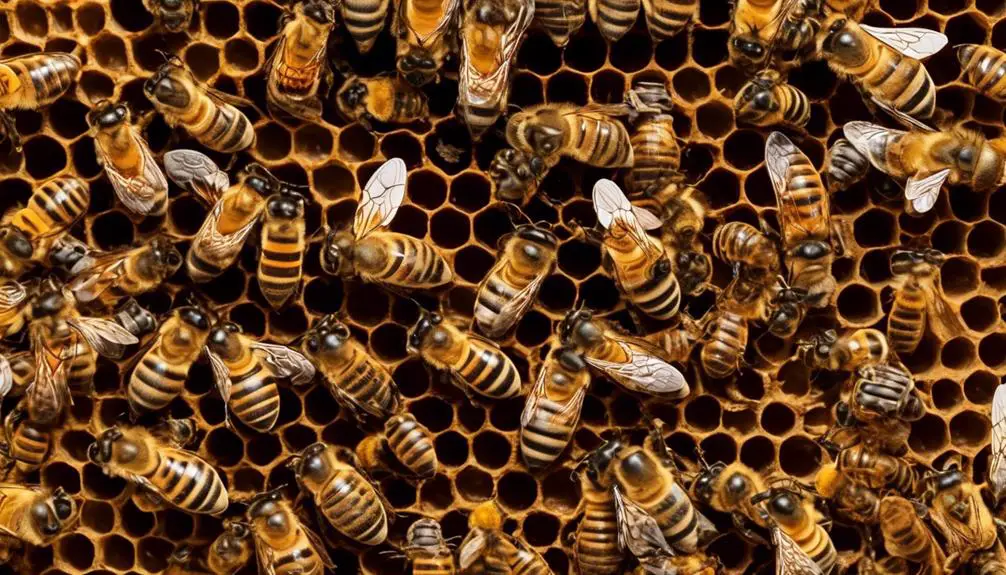
While you're marveling at the solitary existence of ground bees, it's worth shifting your attention to their social counterparts, the honey bees, whose complex and cooperative lifestyle paint a starkly different picture. Honey bees, unlike ground bees, live in large colonies comprising a single queen, numerous drones (males), and thousands of worker bees (sterile females).
Let's delve into their intriguing life cycle. The queen bee, the only fertile female, lays all the eggs in the hive. Drones exist solely to mate with the queen, after which they die. Worker bees perform various chores, including foraging for nectar and pollen, constructing the hive, and protecting it.
Here's a simple table outlining their roles:
Role | Duties |
|---|---|
Queen Bee | Lays eggs |
Drone Bee | Mates with queen |
Worker Bee | Forages, constructs hive, and defends it |
Comparing Appearances
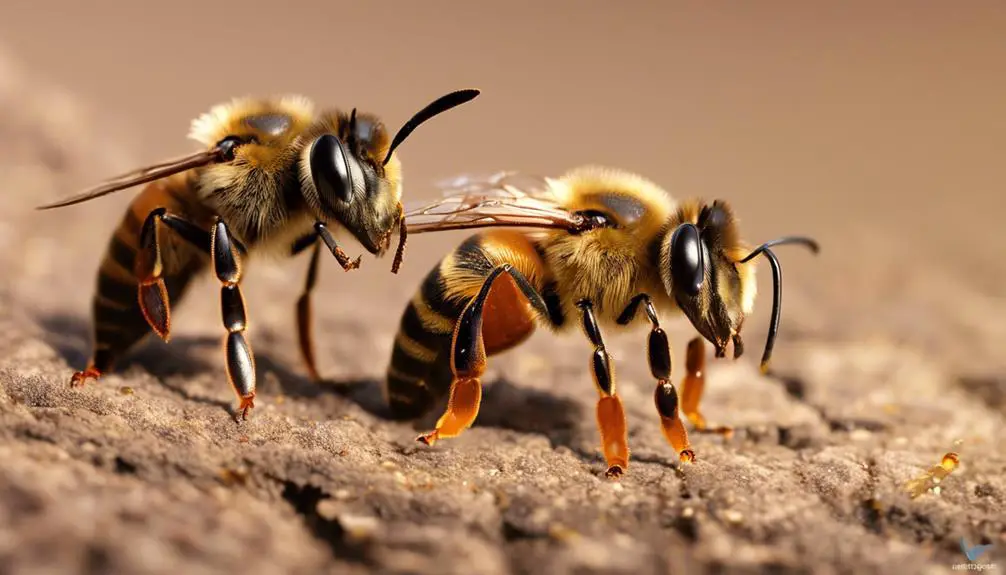
Now that you're familiar with their societal roles, let's examine the visual differences between ground bees and honey bees. At first glance, you mightn't notice the subtle dissimilarities, but a closer look reveals distinctive features.
Honey bees, known scientifically as Apis mellifera, possess a more uniform and streamlined appearance. They're characterized by their golden-brown bodies, interspersed with black bands. Their bodies are fuzzier, a feature that aids in pollen collection. You'll also notice their barbed stingers, a defensive mechanism that unfortunately leads to their demise post-sting.
On the other hand, ground bees, belonging to the family Andrenidae, showcase more diversity in appearance. Their size varies greatly, ranging from petite to robust. Their coloration isn't as consistent, ranging from black, brown, to metallic green or blue. They're less fuzzy compared to honey bees, and their stingers aren't barbed. This allows them to sting multiple times without dying.
Such variations in physical attributes reflect their different lifestyles and habitats. So, while they might be mistaken for each other due to their similar shapes and sizes, ground bees and honey bees are distinct species with unique appearances.
Habitat Differences
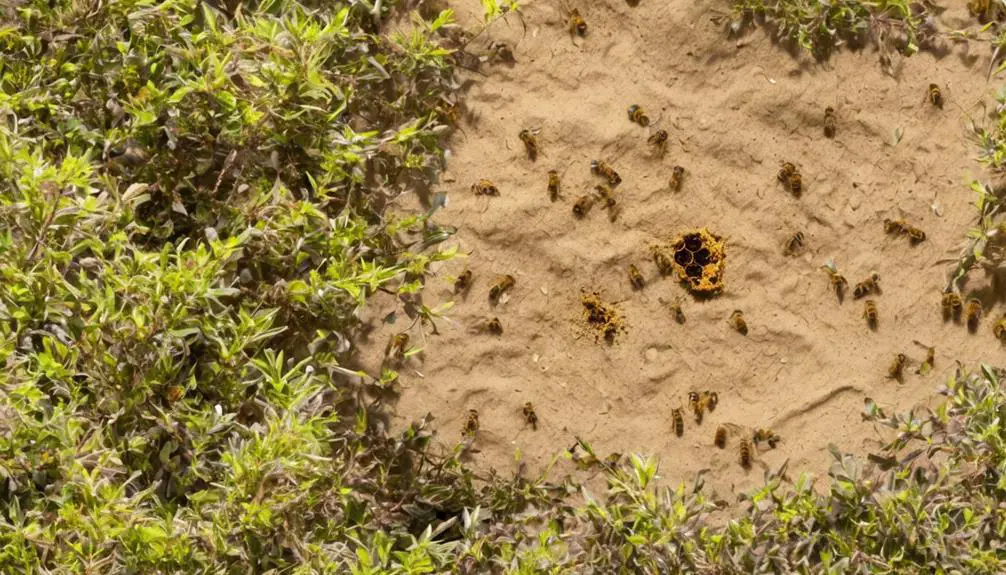
Beyond their unique appearances, ground bees and honey bees also differ significantly in their chosen habitats. You'll find ground bees, as their name suggests, nesting in the soil. They prefer dry, sandy soil and are particularly attracted to well-drained, sunny areas. They're solitary creatures that don't live in colonies like honey bees do. Each female ground bee digs her own burrow, where she lays her eggs and provides for her offspring.
Honey bees, on the other hand, are social insects that live in colonies. They build complex, wax structures, known as hives, often in tree cavities or other sheltered spots. For them, it's important to have a source of nectar and pollen nearby, which they use for food. So, you'll often find them in areas rich with flowering plants. They're also known to inhabit urban settings where they can access gardens and parks.
These habitat preferences aren't arbitrary. They're closely linked to each species' lifestyle and survival strategies. Ground bees tunnel in soil for protection and easy food storage, while honey bees need a hive to accommodate their intricate social structure and store their honey reserves. These differences in habitat reflect their differing ecological roles and survival strategies.
Honey Production Facts
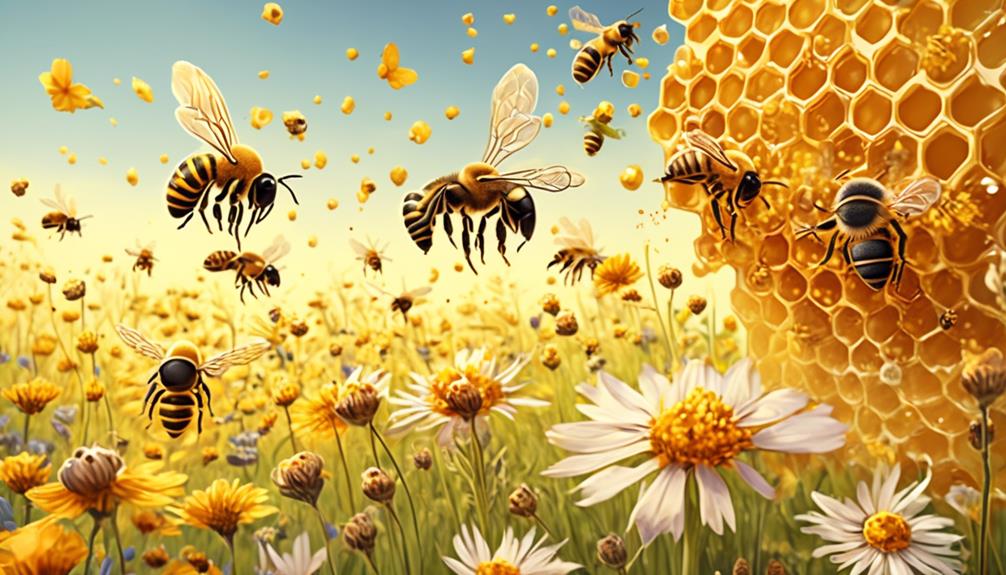
Diving into the world of honey production, you'll discover that honey bees play a pivotal role in this intricate process, converting nectar collected from various flowering plants into the sweet, viscous substance we know and love. By using their long, tube-shaped tongues like straws, they suck the nectar out of the flowers and then store it in their honey stomachs.
Once in the hive, they pass it on to other worker bees, who chew it for about half an hour. During this time, it's mixed with enzymes that break down the nectar into simple sugars. This transformed nectar is then spread throughout the honeycombs where water evaporates from it, creating honey.
Here's a simple table to visualize this process:
Steps | Description |
|---|---|
Nectar Collection | Bees suck the nectar using their tongues |
Conversion | Bees chew the nectar, mixing it with enzymes |
Honey Creation | The transformed nectar is spread in honeycombs for evaporation |
Conclusion
In conclusion, ground bees and honey bees are different species with unique lifestyles and habitats. Ground bees, dwelling in soil, contrast the hive-loving honey bees. Visually, they differ too, with ground bees typically sporting a less fuzzy look.
Lastly, honey production is exclusive to honey bees. So, while they share the bee title, they're distinct, each playing specific roles in our ecosystem. Understanding these differences is key to appreciating their unique contributions to the environment.

